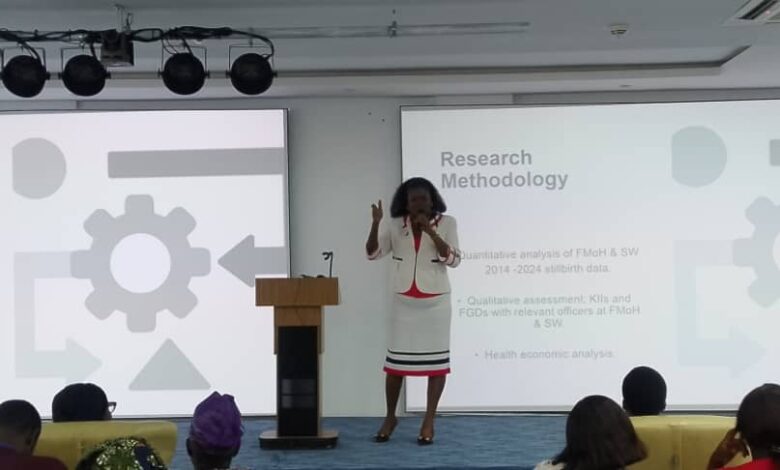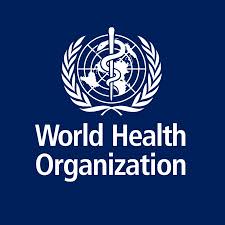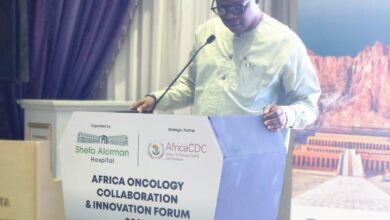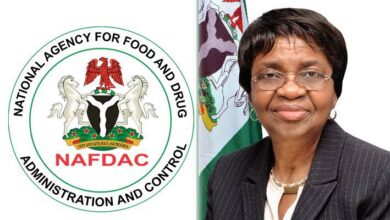
The Institute of Human Virology Nigeria’s International Research Center of Excellence (IHVN-IRCE) have called on the country to improve data reporting, in order to achieve the ENAP target of a Stillbirth rate (SBR) of 12 per 1000 total births by 2030.
Principal investigator of the SPEED Project, Oghome Emembo, gave the call
on Thursday, at the SPEED Project Dissemination and Closeout Meeting held in Abuja.
TheFact Daily gathered from the SPEED Project quantitative data analysis that the Stillbirth Rate in Nigeria is 24/1000 total birth, twice the expected target per Every Newborn Action Plan (ENAP) global target of 12/1000 total birth by 2030.
Zamfara State accounted for the highest Stillbirth burden of 53/ 1000 total births, (more than twice the national estimate) while only Ogun and Osun states had achieved the targeted stillbirth rate at about/ below the 12/1000 total births in Nigeria.
Reacting to the analysis, Emembo noted that there were critical gaps and a need for intensified behavior change communication to reverse the statistics:
“We did a quantitative analysis of data from 2013 to 2023, and Zamfara State ranks highest, which is a pointer to the fact that there are clinical management gaps, there are socio-cultural behavioural factors. There is a need for intensified behaviour change communication to improve attitude to antenatal care, to improve spousal involvement, and to improve investment in maternal and health care services in Zamfara State”.
On the achievements recorded in the course of implementing the project, She said:
“So one of the things we did, we’re so grateful we’re able to achieve, was get all our policy recommendations approved by Professor Mohammed Ali Pate.
“The first thing he did was to approve the inclusion of stillbirths data in the quarterly reporting system of data indicators reported to him on a quarterly basis in the Ministry of Health for work planning and budgeting.
“So that was really important to us because we do not want to close out this SPEED project without having our subject matter and our research problem being circulated, reported, and used in that system, so we achieved that”.
Highlighting other achievements, Emembo stated, “the second thing we were able to achieve is the inclusion of stillbirths data among indicators on the dashboard in the Minister’s Office, so that’s where we are aware that his eyes are also monitoring stillbirths data.
“And of course, the last thing we’re able to achieve is an expansion of the Helping Babies Breath programme to Zamfara State. Helping Babies Breathe is a targeted capacity building programme meant for midwives and the health workers in maternal and healthcare services in the hospitals, teaching them how to resuscitate babies on the verge of a stillbirth”.
She concluded with a call to action for the nation:
“Our call to action is a national call for improved collective consciousness and a call for improved awareness.This is the national call to improve data reporting used to prevent stillbirths in Nigeria and we are looking forward to reduced preventable stillbirths in Nigeria”, she said.
Earlier on, the Assistant Director and Coordinator, IRCE, Dr. Evaezi Okpokoro highlighted that there was a need to learn from the states with low stillbirth rates and apply the lesson to states with high rates to improve the country’s indices:
“Take a cue from a state like Osun, We need to understand what’s happening in Osun and Ogun, why is stillbirth rate consistently low compared to other states? Is there need for more training in the health care facilities? Is there need for infrastructural support? We need to understand why.
“We also need to improve healthcare services including trainings for SBAs (Skilled Birth Attendants) and continuous orientation for pregnant women for antenatal care packages to be effective”, he said.
Dr. Okpokoro noted that SPEED had championed Institutional learning, communication and advocacy programs considering states where stillbirth rate was higher.
He however requested that despite the closeout, they should continue to support the possible advocacy program at the state level, “particularly, since you have supported the journey from the national level, you can support the states to improve and drive this policy reduction program”, he said.






